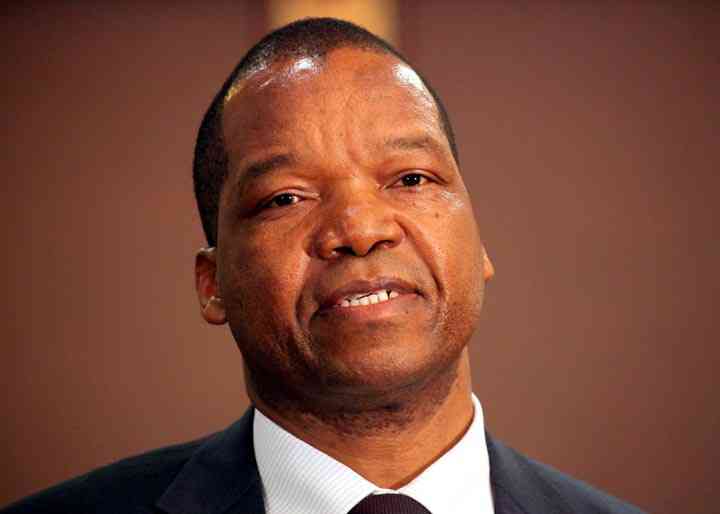
CAPTAINS of industry and commerce expect the Reserve Bank of Zimbabwe (RBZ) governor John Mangudya (pictured) to introduce a market determined exchange rate and abolish the 10% trading margin, as he delivers the monetary policy statement (MPS) this month.
The industry also wants to see a framework of how the suggested currency board will work.
The central bank governor is expected to deliver the eagerly-awaited MPS this month, at a time when the local currency has depreciated by more than 70% year-to-date.
It also comes after the International Monetary Fund (IMF) advised the RBZ to limit its participation in formulating monetary policies to only its basic duties.
The government has been using the central bank's quasi-fiscal operations to pay its ballooning debts, increasing money supply in the process.
“CZI (Confederation of Zimbabwe Industries) has over the years highlighted that money supply growth and sudden huge liquidity injection are the major culprits of Zimbabwe’s currency woes,” CZI chief executive officer Sekai Kuvarika said.
“Introduction of a currency board without addressing the underlying factors that result in money creation and sudden liquidity exchange will be futile.”
There have been discussions around the introduction of a currency board in Zimbabwe, whose role will be to give control over the money supply and exchange rate to a monetary body that also decides how much a country's currency is worth.
- Dual economy Zim’s Achilles heel
- Village Rhapsody: How Zimbabwe can improve governance
- Dual economy Zim’s Achilles heel
- Scrap IMTT to save industry, govt urged
Keep Reading
According to the IMF, three components make up a currency board: automatic convertibility (the ability to exchange domestic currency at this fixed rate whenever desired), a fixed exchange rate tied to an "anchor currency" and a long-term commitment to the system, which is typically explicitly stated in central bank laws.
The primary goal of nations considering a currency board is to implement an obvious anti-inflationary strategy.
Kuvarika added that CZI expects to see a framework outlining the operation of the proposed currency board.
“The Minister of Finance (Mthuli Ncube) recently said that in order to manage the growth of liquidity which has a high correlation to money supply growth and inflation, we may link the exchange rate to some hard asset such as gold.
“To do that, you have to have some sort of currency board type system where the growth of the domestic liquidity is constrained by the value of the asset that is backing the currency,” she said.
Kuvarika added: “CZI expects to see a framework of how the suggested currency board will work, central banks commitment to a quarterly external audit and commitment to frequently publish monetary statistics data.
CZI over the years have submitted detailed proposals on the currency board to the authorities.”
She said the industry also expects the introduction of a market determined exchange rate and the abolishment of the 10% trading margin above the interbank rate.
“A market determined exchange rate is a prerequisite for a successful currency board. The central bank must not control the foreign exchange market, controlling the foreign exchange market resulted in huge costs to the country in the past,” she said.
“Some of the examples include the blocked funds debt and recently the foreign exchange auction backlogs debt.”
Businesses have suffered as a result of the interest rate increase to 200% in May 2022 and the subsequent decrease to 130% in 2023.
Due to the increase in interest rates, many businesses who were borrowing Zimbabwe dollars for working capital requirements found themselves in difficult financial situations.
“Some companies closed as they were highly geared and could not recover from the impact of interest hike. Companies are still feeling the effects of the interest hike, and some are retrenching workers in an effort to avoid shutting down,” she said.
“Dollarisation has been exacerbated by the high interest rates, ZWL$ borrowing is almost non-existent with USD loans constituting over 95% of total loans. The ideal interest rate for ZWL$ currently is between 40 to 50%.”
The Zimbabwe National Chamber of Commerce chief executive officer Christopher Mugaga said they were looking forward to seeing how the structured currency being introduced by the government will work.
“We are looking to see the nature and the modalities of how it will be working so that will be the major highlight we will be looking forward to because all the other things are functional and depend on the currency as the currency is the biggest problem,” Mugaga said.
He added that the greenback should remain constant in order for the interest rate to make sense.
“Whether you put the interest rate at 0% or 100%, if the dollar itself is not stable the interest rate will not make sense, so what we want is a stable currency that will be supported by an interest rate review which is credible.
“So, even if Mthuli or Mangudya pushes the interest rate down, the Zimdollar will be good, so our hope is that inflation is reduced, because as long as inflation is high you cannot think of interest rates that are low,” he said.
John Mushayavanhu, the CEO of FBC Holdings Limited Group, is the incoming RBZ governor, when Mandudya’s term expires at the end of April this year.
Mugaga believed that the new governor will continue with the new MPS for stability.






